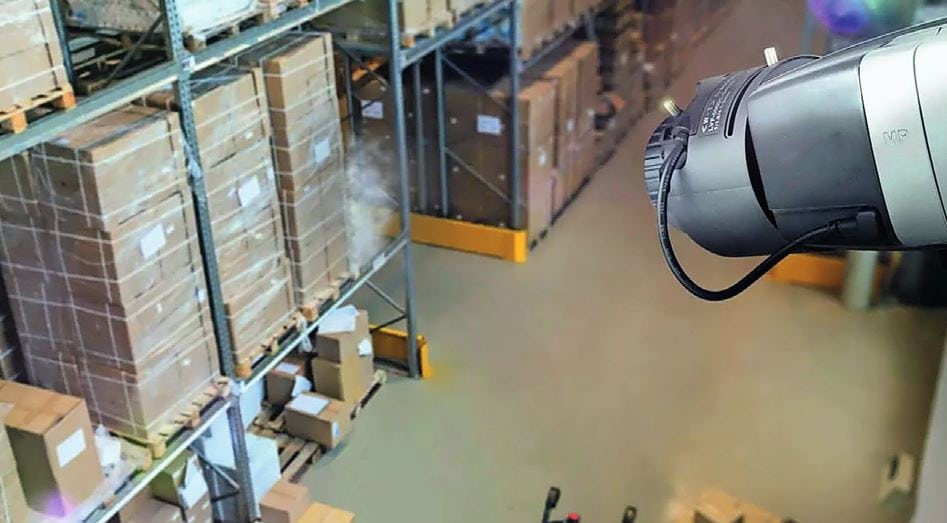New requirements for the security service provider
Despite the corona pandemic, the security industry has weathered this phase well overall, thanks in part to the assumption of new security tasks in the healthcare sector or in corona-related entry controls in the retail trade.

The security industry has grown strongly in most Western European countries in recent decades. The main drivers have been changes in the threat environment, increasing demand from the growing economy, increasing outsourcing of corporate security functions and a lack of human resources in the police and municipal law enforcement agencies.
For example, the number of security service providers (SDL) organized in the Swiss Security Services Contractors Association (VSSU) increased to 900 by 2019, with a total number of security officers (SMA) of 21,000 (compared to 19,000 police officers).
In Germany, the total turnover of the security industry more than doubled from 2009 to 2020 to 9.21 billion Swiss francs. The approximately 1,000 members of the German Federal Association of the Security Industry (BDSW) employ 262,000 SMA (compared to 337,000 police officers). However, the industry faces major challenges in Switzerland as in Germany: The threat situation, a weighty factor influencing the security market, is tending to change. Many segments of physical crime are declining, while cybercrime is increasing dramatically. The labor market for SMA is empty.
In Germany, around 12,000 jobs in the security industry are currently unfilled. There is no improvement in sight. The police are overburdened by a wide range of new tasks - in particular the prevention of terrorism and the investigation of cybercrimes - so that there are repeated discussions about whether the security industry could relieve them, for example in securing events, protecting public buildings or patrolling obscure parks. Critical infrastructures are increasingly becoming the focus of security authorities and require increased physical protection. And time and again, the media report on isolated but sensational scandals caused by individual security companies.
In both Switzerland and Germany, the legal framework is insufficient to exclude individual black sheep among SDLs and to prescribe high quality and reliability standards. The greatest challenge, however, is the increasingly intelligent safety technology, which does not replace the SDL, but with which it must deal. So how will the SDL of the future have to be positioned to meet all these challenges?
The change management required for the SDL of the future can be described in nine topic areas:
Flexibility and agility
The world is changing faster and faster, and so are threat situations and security requirements. The SDL of the future must take this into account in its business strategy. It must constantly monitor and analyze the security market, adjust its management for flexibility, prepare for new tasks in the qualification of SMA and in the range of services, and develop new business models. One such new business model is, for example, the support of retail stores in the city center by mobile patrols without a function in the public space, who, when alerted, are on site as quickly as possible to support personnel calling for help, for example in the event of a robbery, a threat, urgent clarification of suspicious circumstances or admission control due to pandemic regulations.
Industry segmentation
The increasingly differentiated security requirements in individual sectors, whether in industry, healthcare, airports, other critical infrastructures, the hotel industry or public spaces, can be more easily managed by sector segmentation in the organization alongside the regional organizational structure at larger SDL. The necessary expertise and experience as a basis for customer consulting as well as the pooling of corresponding qualified employees and the procurement of the necessary security technology can thus be better bundled.
Security consulting
The SDL of the future must be able to provide (potential) customers with comprehensive advice. This includes risk and vulnerability analysis as well as security design. Especially for small and medium-sized enterprises (SMEs) that do not have any security experts, security consulting by the SDL is essential. This consulting will become more complex as more security requirements become normative. And it must also include those security solutions that the SDL cannot provide itself. This applies in particular to IT security, which is becoming increasingly important as the threat situation changes and digitization advances. If the SDL does not have its own IT experts for a detailed security concept and its implementation in the IT area, it should enter into a strategic partnership with a company specializing in IT security.

Relieving the burden on police and municipal security authorities
The SDL of the future will be active in public spaces more often than in the past. The overload of the police will make the question of relief by SDL louder. The same applies to the municipal public order offices, whose task it is to control confusing "fear spaces" frequented by troublemakers, and whose personnel resources are often insufficient for this, especially at "off-duty" times of the evening, at night or on weekends. Both in Switzerland and in Germany, the SDL lacks "low-threshold" powers of intervention to stop people, check their identification and expel them. This is a challenge for politics, because effective patrols cannot be carried out with the "everyman's rights" of civil law. It goes without saying that the state's monopoly on the use of force must not be violated. The "low-threshold" powers do not violate the monopoly.
Holistic security solutions
In the past, the client often determined the type and scope of the desired security service and put out to tender a number of "man-hours" calculated on this basis, with the contract usually being awarded to the cheapest provider, who was usually not the most reliable and best-performing. A paradigm shift is taking place here. In the future, more and more security customers will demand an integrated security solution from a single source. The SDL of the future must meet this demand by offering a customer-specific risk analysis and security concept with integrated security technology.
He is expected not only to plan the necessary mechanical and electronic safety technology, but also to invest in safety technology systems himself, and to operate, service and maintain them. Safety technology has become increasingly intelligent and effective in recent decades. Innovation cycles are becoming shorter and shorter. This trend will continue. The SDL of the future must integrate all the safety technology required for its existing and expanding customer base into its range of services, familiarize itself with it and ensure the appropriate procurement options.
Digitization
Security technology is becoming increasingly digital. Digital technology has become indispensable in all electronic security applications, for example video surveillance and image analysis, access control, fire detection and fire fighting. The SDL of the future must fully realize this digitalization in its range of services, in the equipment of its SMA with appropriate means of communication, measuring and locating instruments, but also in the infrastructure of its company. This is probably the most difficult and perhaps also the most costly step in change management. But it is worth it. Digitization accelerates and de-bureaucratizes internal organization, personnel planning, deployment preparation and documentation. Digitized costing programs make it easier to prepare bids in the contract award process. Customer contracts are managed in digital form. The creation of a database concentrates the company's expertise, best-practice references and an overview of SMA's qualifications and mobility.
Predictive Services
The police have started using predictive policing. For example, based on the processing of all data relevant to residential burglary in a particular district, it is able to calculate the probability of committing such burglaries in certain streets, at certain times of the day, week or year, with the help of intelligent algorithms, and to gear its preventive patrol activities accordingly. Such intelligent processing of Big Data will also be operated by the SDL of the future. This applies not only to predictive guarding in certain residential areas, but also to predictive controlling in public transport, where patterns can be read from determined key figures to show at which times and on which routes most passengers are traveling without a valid ticket, and to predictive maintenance: For a safety-related system operated by the SDL, algorithms continuously evaluate all design, operating and process data in the life cycle of the machine and automatically calculate the optimum time for maintenance to avoid operational and cost aspects.

Human Resources Development
The SDL of the future has to overcome two problems: the shortage of personnel and the necessary change in the qualification of employees in order to meet new tasks, especially in the field of safety technology. It cannot overcome the shortage of personnel by clever target-group-oriented advertising alone. It must significantly increase its attractiveness as an employer: through fair pay that is not based on the minimum wage, through working time arrangements that take into account the interests of SMA, and through a personnel development program that opens up prospects for employees to participate in the constantly evolving further training in the company's own academy, to switch to another job that is of particular interest to them, or even - depending on their training and further education, performance and commitment - to move up to middle management. Personnel development must include training in the use of modern, sophisticated safety technology and the recruitment of suitably qualified employees.
Compliance
The activities of the SDL have always been the subject of criticism in parts of the public and especially in the media. Allegations of legal violations have damaged the reputation of the security industry. The expected expansion of the scope of activities and the increasing density of regulation will reinforce the critical attitude and cause the SDL of the future to place the greatest emphasis on adherence to all relevant regulations through strict compliance management. This also includes a whistleblowing system in which the whistleblower does not have to fear any sanctions or disadvantages.
This technical article appeared in the printed edition SicherheitsForum 2-2021.
You want to read the articles of this issue? Then close right now here a subscription.









